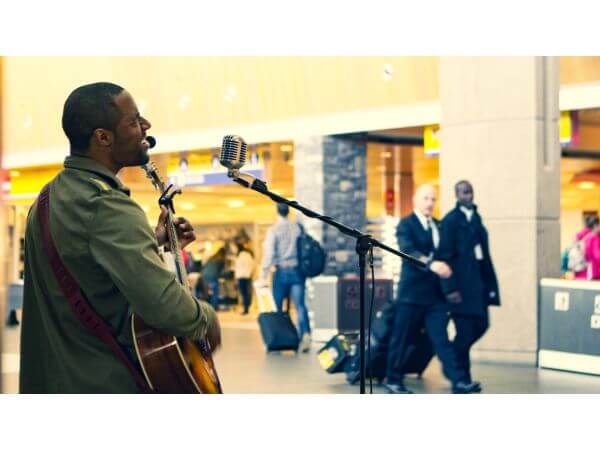Written by Derek Manns, Co-founder & CEO, Stagehand
The time is right to make real and lasting change for the Arts.
The Arts industry was facing some serious challenges long before COVID added to the malais. Traditional arts institutions’ leadership position has eroded, funding is a perpetual challenge and what there is must be spread over more numerous and diverse recipients. On top of all that, global content providers like Netflix insidiously threaten to homogenize local arts and culture.
However when I step back from the daily challenges, I am optimistic about the future.
Douglas McLennan, the founder and editor of the ArtsJournal talks about Restorationists vs. Opportunists in his blog post, Arts: Rebuild What? And Why? Post-pandemic, Restorationists want things to go back to how they were while Opportunists look at this as a chance for meaningful change.
It is easy to talk about effecting change, but what does that really mean?
It may be helpful to look at what disruptive change has looked like in other industries.
One of the biggest industry disruptions I have personally experienced is in hotel accommodation. We have visited New York City many times, and initially we would stay in hotels. Now we almost exclusively use Airbnb to stay in other people's apartments. One of my most memorable stays was in a tiny apartment in Hell's Kitchen. It may not have been as luxurious as some hotels, but it was a unique experience and it made me feel like a real “New Yorker”. So how is it that an Airbnb host can suddenly compete with the multi-billion dollar hotel industry?
Airbnb uses technology to empower its users.
Through Airbnb, anyone with a room to rent has access to a marketplace of customers needing accommodation, and technology has made it easy for them to market their product, manage their bookings, and transact business with customers. The consistency and data that exists in the platform builds confidence for users.
Creating a culture of empowerment
Let’s look at an example of how technology can be used to empower the Arts. In 2019, the Calgary International Airport (YYC) wanted to launch a music program, and not just a few performances during special occasions, they wanted live music to be part of the daily experience. From humble beginnings, the program grew to over 1,600 performances in the first year. Live music brought culture into the airport, it improved the overall experience for travellers and it provided new paid performance opportunities for artists. YYC was able to do this despite having no music industry expertise or budget to hire music bookers.
YYC used Stagehand as the technology platform to gain access to a network of local artists and an intake process that allowed a selection committee at the Airport to collaborate on decision making. Selected artists were treated like partners and asked to complete various onboarding requirements (like security) which enabled them to function independently. Next, artists were empowered to schedule their own performances which automated the time consuming tasks of booking, cancelling, and re-booking performances. The platform monitored the schedule, artists confirmed performances when complete and the airport made approvals so that automated payments could be processed.
What was perhaps most satisfying was to watch how YYC listened, learned, gained confidence, and innovated. Before long, one stage had grown to four, passengers were two-stepping to musicians playing on baggage carousels, and artists were jamming with visiting superstars. Feedback was overwhelmingly positive and the best artists took it upon themselves to adapt to the environment and entertain or soothe passengers depending on what the moment called for. In short, YYC had a new set of skills and tools that they were excited and empowered to use to improve their business.
What can we learn from this?
The key is to deploy technology in a way that removes barriers and empowers new participants in an industry. Artists represent a limitless inventory of skills that can activate any location but access to this talent is daunting unless you are already “in the business”. Sadly, this industry often does not have the budget to pay middlemen or experts so this wealth of talent remains inaccessible to most. If there was easier access and greater confidence in this talent, think of what is possible at shopping malls, hospitals, seniors homes, public transit or office tower lobbies and public spaces.
I have been told that the old paradigm for the arts represented a “culture of control”, where various large and well established institutions were viewed and trusted as the leaders in arts and culture. The internet changed that by dismantling barriers and empowering a new generation which in turn sparked a proliferation of new and diverse work. This boom in innovation is a blessing and a challenge for government and industry leaders who are doing their best to support the old and the new but lack the tools and data to deal with the complexity.
Digital infrastructure has a central role to play in enabling this new and diverse world of the arts. Infrastructure isn’t as sexy as being a front line presenter but done right it will aggregate and empower an industry that is rich in talent but short on opportunity.
Stagehand builds digital infrastructure that enables a “culture of empowerment” where new types of presenters can work with artists in new and innovative ways.
For more information or to get started using Stagehand, visit www.stagehand.app or contact info@stagehand.app.

